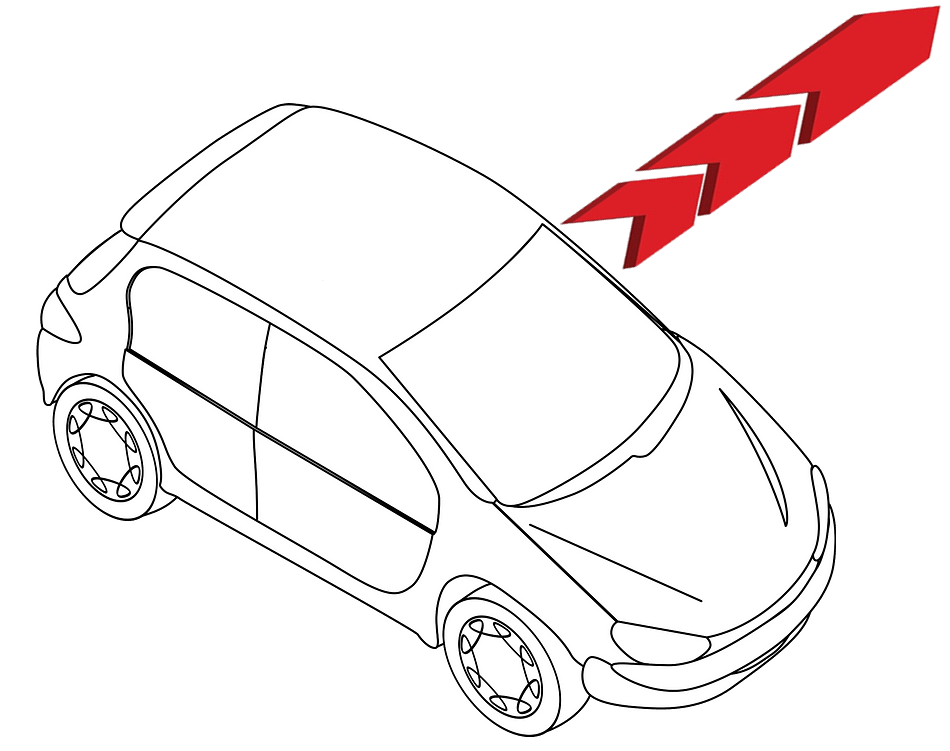
Lateral
High speed cornering.Sudden change in direction such as swerving.Weakened suspensionwhen cornering. Resistance
on one side of the vehicle greater than the other side. E.g., riding on a gravel shoulderwith one set of wheels while the other set are on the tar. Tire failure such as a blowout or retread peeling off. Wheel failure such as a bearing seizing, brake binding or wheel coming loose. Too much momentumin the front of the vehicle resulting in understeer.Too much momentum at the rear of the vehicle, resulting in oversteer.
🛈 Info:

🛈 Lateral forces on a vehicle in motion
Centrifugal force: Centrifugal force is the outward force created by the vehicle's motion as it turns a corner. It acts perpendicular to the direction of motion and is proportional to the mass of the vehicle and the square of its speed. Centrifugal force can cause the vehicle to drift out of its lane or lose traction and skid. Cornering force: Cornering force is the force created by the tires as they grip the road surface and change the direction of the vehicle's motion. This force is generated by the friction between the tires and the road surface and depends on the weight of the vehicle, the tire design, and the road surface conditions. Wind force: Wind force is the force created by the air as it flows around the vehicle. It can cause the vehicle to drift off course or become unstable, particularly in high winds or with tall or narrow vehicles. Steering forces: Steering forces are the forces created by the steering system as the driver turns the wheel. These forces can affect the responsiveness and control of the vehicle and are influenced by the vehicle's design and the road surface conditions.